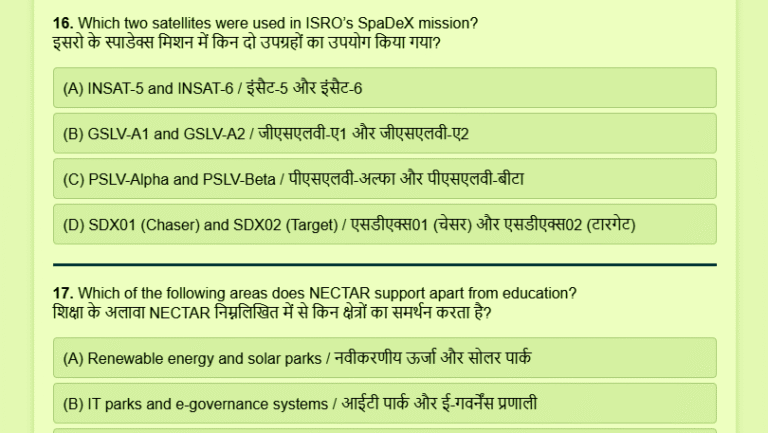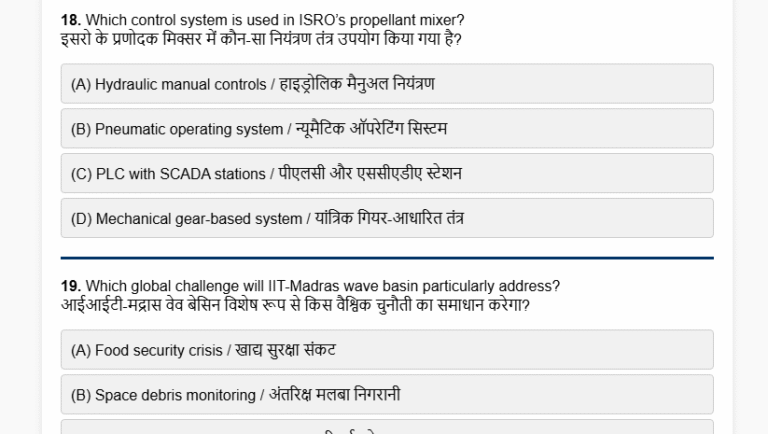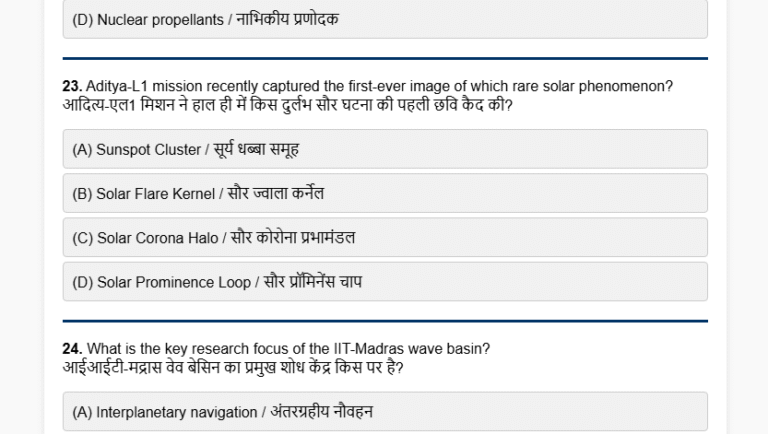Introduction
In an effort to ensure the effective implementation of the Sexual Harassment of Women at Workplace (Prevention, Prohibition, and Redressal) Act, 2013 (SH Act), the Ministry of Women and Child Development (MWCD) has launched the SHe-Box Portal. This online platform is a significant step towards providing a streamlined, centralized, and transparent mechanism for addressing complaints related to sexual harassment at workplaces across India.
About the SHe-Box Portal
What is the SHe-Box Portal?
The SHe-Box (Sexual Harassment electronic Box) is an online complaint management system designed to help in the effective implementation of the SH Act. Launched by the Ministry of Women and Child Development, this portal aims to facilitate the reporting, tracking, and resolution of sexual harassment complaints, ensuring a safer working environment for women.
Objectives of SHe-Box
- Centralized Platform: To create a single window for the registration and monitoring of complaints.
- Real-Time Monitoring: To provide real-time updates on the status of complaints.
- Transparency and Accountability: To hold organizations accountable for addressing complaints promptly.
- Confidentiality: To ensure that the identity of complainants is protected to encourage reporting.
Key Features of the SHe-Box Portal
1. Designated Nodal Officer
- Every workplace is required to have a designated Nodal Officer responsible for ensuring that data is updated regularly.
- The Nodal Officer ensures the real-time monitoring of complaints and oversees their resolution.
2. Filing of Complaints
- Any aggrieved woman can file a complaint on the portal.
- Complaints can also be filed by a third party on behalf of the complainant.
- The portal is accessible to all women, regardless of their employment status.
3. Monitoring Dashboard
- The portal includes a monitoring dashboard for Nodal Officers at various levels (Central, State/UT, and District).
- The dashboard provides data on complaints filed, resolved, and pending, promoting transparency.
4. Confidentiality
- The portal maintains the confidentiality of the complainant’s details.
- Only the Chairperson of the Internal Committee (IC) or Local Committee (LC) has access to complaint details.
- This feature encourages more women to report incidents without fear of exposure.
5. Ease of Access
- The portal is designed for user-friendliness, ensuring that women from all sectors can file complaints seamlessly.
The Sexual Harassment of Women at Workplace (Prevention, Prohibition, and Redressal) Act, 2013
Overview of the SH Act
The Sexual Harassment of Women at Workplace (Prevention, Prohibition, and Redressal) Act, 2013 (SH Act) was enacted to address the issue of sexual harassment in workplaces. The Act ensures a safe, respectful, and inclusive environment for women. It mandates preventive measures, redressal mechanisms, and strict penalties for violations.
Key Provisions of the SH Act
1. Definition of Sexual Harassment
Sexual harassment includes the following:
- Unwelcome physical contact and advances
- Demand or request for sexual favors
- Sexually colored remarks
- Showing pornography
- Any other unwelcome physical, verbal, or non-verbal conduct of a sexual nature
2. Internal Complaints Committee (ICC)
- Every organization with 10 or more employees must constitute an Internal Complaints Committee (ICC).
- The committee must be chaired by a senior female employee.
- The ICC must also include at least one external member, such as an expert on women’s issues or a representative from an NGO.
3. Local Committees (LCs)
- In cases where an organization has fewer than 10 employees, complaints are directed to Local Committees (LCs) established by the District Officer.
4. Complaint Mechanism
- Women can file complaints within three months of the incident.
- The ICC or LC must complete the inquiry within 90 days.
- The final report should be submitted within 10 days of the inquiry’s conclusion.
5. Confidentiality
- Details of the complaint, identity of the complainant, respondent, and witnesses are kept confidential.
- Violation of confidentiality can attract penalties.
6. Employer Responsibility
- Employers are responsible for:
- Preventive Measures: Creating awareness and conducting training programs.
- Policy Implementation: Ensuring the establishment of ICCs and compliance with the law.
- Action on Complaints: Acting promptly and taking disciplinary measures when harassment is proven.
7. Redressal and Compensation
- If harassment is proven, appropriate disciplinary action, such as suspension or termination, can be taken against the offender.
- Compensation may be awarded to the victim based on the severity of the harassment and the loss suffered.
8. No Retaliation
- Retaliation against complainants or witnesses is strictly prohibited.
- Any act of retaliation is treated as a separate violation under the SH Act.
9. Penalties for Non-Compliance
- Employers who fail to comply with the provisions of the SH Act may face penalties, including fines of up to ₹50,000.
- Repeated violations can lead to cancellation of business licenses.
Significance of the SH Act and SHe-Box Portal
Empowerment of Women
- The SH Act empowers women by providing a legal framework to address harassment.
- The SHe-Box portal complements this by offering a transparent and accessible platform for filing complaints.
Safe Work Environments
- By addressing workplace harassment, the SH Act promotes safe and respectful environments, encouraging women to participate actively in the workforce.
- Organizations are mandated to implement preventive measures, making workplaces safer for women.
Transparency and Accountability
- The SHe-Box portal enhances transparency by allowing real-time monitoring of complaints.
- It holds employers and authorities accountable for resolving complaints promptly.
Challenges in Implementing the SH Act
1. Lack of Awareness
- Many women are unaware of their rights under the SH Act.
- There is insufficient knowledge about the existence of the SHe-Box portal and how to use it.
2. Underreporting of Complaints
- Fear of retaliation, stigma, and lack of trust in the system often deter women from reporting harassment.
- Underreporting is particularly prevalent in smaller organizations and informal sectors.
3. Ineffective Implementation
- In some organizations, the Internal Complaints Committees (ICCs) exist only on paper and are not functional.
- The quality of inquiry and redressal is sometimes compromised due to lack of training or bias.
4. Reluctance in Establishing ICCs
- Some employers are reluctant to form ICCs due to fear of exposing workplace issues.
- Non-compliance with the requirement of external members weakens the credibility of the ICC.
5. Delayed Redressal
- Delays in addressing complaints can frustrate victims and reduce confidence in the system.
- Bureaucratic hurdles and lack of coordination between authorities exacerbate the issue.
Way Forward
1. Increasing Awareness
- Workshops and Training Programs: Employers should conduct regular awareness programs to educate employees about their rights and the mechanisms available.
- Media Campaigns: Use of print, electronic, and social media to promote awareness about the SH Act and the SHe-Box portal.
2. Strengthening ICCs and LCs
- Ensure that ICCs are constituted and trained to handle complaints sensitively and effectively.
- Regular audits and inspections can help verify the functionality of these committees.
3. Encouraging Reporting
- Create a non-intimidating environment where women feel safe to report harassment.
- Guarantee protection against retaliation and ensure confidentiality is strictly maintained.
4. Technology Integration
- Leverage technology to make the complaint process more accessible.
- Promote the use of the SHe-Box portal among employees across sectors.
5. Accountability and Monitoring
- Implement a robust monitoring system to track the resolution of complaints.
- Employers should be held accountable for delays and non-compliance with the SH Act.
6. Collaboration with NGOs and Experts
- Collaboration with NGOs and women’s rights organizations can help in improving awareness and implementation.
- External members in ICCs can provide unbiased perspectives and expertise.
Conclusion
The Sexual Harassment of Women at Workplace (Prevention, Prohibition, and Redressal) Act, 2013 is a landmark legislation aimed at protecting women from harassment in workplaces. The introduction of the SHe-Box portal by the Ministry of Women and Child Development represents a progressive step towards ensuring the effective implementation of this Act. By offering a centralized, confidential, and accessible platform, the SHe-Box portal empowers women to report harassment without fear.
While the SH Act and SHe-Box portal provide comprehensive frameworks for addressing workplace harassment, their success hinges on effective implementation, widespread awareness, and a commitment from employers and society at large. Ensuring safe workplaces for women is not only a legal obligation but also a moral imperative to promote equality, dignity, and empowerment in the workforce.
The SHe-Box portal and the SH Act, 2013 are crucial tools in addressing workplace harassment and promoting gender equality. They aim to create safer work environments, empower women, and enforce accountability. While challenges remain, effective implementation, awareness, and technological integration can ensure their success in safeguarding the rights and dignity of women in the workplace.
Daily Mains Practice Question
UPSC (CSE) Mains Questions on the SHe-Box Portal and SH Act, 2013
1. GS Paper II: Governance, Social Justice
| [Q1.] Discuss the significance of the Sexual Harassment of Women at Workplace (Prevention, Prohibition, and Redressal) Act, 2013 in promoting a safe and respectful work environment for women. What role does the SHe-Box portal play in enhancing the implementation of this Act? (250 words) |
| [Q2.] Analyze the challenges in the implementation of the SH Act, 2013. How can technology-driven solutions like the SHe-Box portal address these challenges effectively? (250 words) |
| [Q3.] Critically examine the role of Internal Complaints Committees (ICCs) under the SH Act, 2013. What measures can be taken to ensure their effective functioning? (250 words) |
| [Q4.] Awareness and accountability are key to the successful implementation of the SH Act, 2013.” Discuss with reference to the SHe-Box portal and its features. (250 words) |
| [Q5.] Evaluate the impact of the SHe-Box portal on addressing workplace harassment in both formal and informal sectors. What steps can be taken to increase its outreach and effectiveness? (250 words) |
2. GS Paper II: Indian Polity and Governance
| [Q6.] Explain the key provisions of the SH Act, 2013. How does the SHe-Box portal facilitate real-time monitoring and transparency in handling complaints? (250 words) |
| [Q7.] Discuss the constitutional and legal basis for protecting women against sexual harassment in the workplace in India. How does the SH Act, 2013 uphold these protections? (250 words) |
| [Q8.] What are the responsibilities of employers under the SH Act, 2013? How can compliance be ensured to create safer work environments? (250 words) |
| [Q9.] Analyze the ethical and legal challenges associated with underreporting of workplace harassment. How can mechanisms like the SHe-Box portal help overcome these issues? (250 words) |
| [Q10.] Critically evaluate the effectiveness of Local Committees (LCs) in addressing workplace harassment complaints in small and informal workplaces? (250 words) |
3. GS Paper IV: Ethics, Integrity, and Aptitude
| [Q11.] Discuss the ethical responsibilities of employers and employees in ensuring a harassment-free workplace. How does the SH Act, 2013 promote ethical workplace practices? (250 words) |
| [Q12.] Evaluate the role of confidentiality in handling workplace harassment complaints. How does the SHe-Box portal balance transparency with confidentiality? (250 words) |
| [Q13.] What ethical considerations should guide the functioning of Internal Complaints Committees (ICCs) while handling cases of workplace harassment? (250 words) |
| [Q14.] “Trust and integrity are crucial for effective grievance redressal mechanisms.” Discuss this statement in the context of the SH Act, 2013 and the SHe-Box portal. (250 words) |
FAQs on the SHe-Box Portal and the SH Act, 2013
1. What is the SHe-Box portal?
Answer:—
The SHe-Box (Sexual Harassment electronic Box) portal is an online platform launched by the Ministry of Women and Child Development to facilitate the reporting, tracking, and resolution of sexual harassment complaints under the SH Act, 2013.
2. Who can file a complaint on the SHe-Box portal?
Answer:—
Any woman who has faced sexual harassment at her workplace can file a complaint. Complaints can also be filed by a third party on behalf of the aggrieved woman.
3. What are the key features of the SHe-Box portal?
Answer:—
The portal offers features such as:
- Designated Nodal Officer for real-time data updates.
- Centralized complaint filing system.
- Monitoring dashboards for tracking complaint status.
- Confidentiality of complainant details.
4. How does the SHe-Box portal maintain confidentiality?
Answer:—
Only the Chairperson of the Internal Committee (IC) or Local Committee (LC) can view the complaint details. The system masks the complainant’s identity to protect confidentiality.
5. What is the SH Act, 2013?
Answer:—
The Sexual Harassment of Women at Workplace (Prevention, Prohibition, and Redressal) Act, 2013 is a law that provides a framework for preventing and addressing sexual harassment of women in workplaces.
6. What constitutes sexual harassment under the SH Act, 2013?
Answer:—
Sexual harassment includes unwelcome physical contact, sexual advances, demands for sexual favors, sexually colored remarks, and other inappropriate conduct of a sexual nature.
7. What is an Internal Complaints Committee (ICC)?
Answer:—
An ICC is a mandatory committee that organizations with more than 10 employees must establish to handle complaints of sexual harassment. It should be led by a senior female employee and include an external member.
8. What is the role of Local Committees (LCs)?
Answer:—
LCs handle complaints in organizations with fewer than 10 employees or where an ICC has not been constituted. They are formed at the district level by the District Officer.
9. What is the time limit for filing a complaint under the SH Act, 2013?
Answer:—
A complaint must be filed within three months of the incident. In certain cases, this period can be extended if justified.
10. What are the penalties for non-compliance with the SH Act, 2013?
Answer:—
Employers who fail to comply may face fines up to ₹50,000. Repeated violations can lead to cancellation of business licenses.
11. How can awareness about the SHe-Box portal be increased?
Answer:—
Conducting workshops, training programs, media campaigns, and integrating the portal into organizational policies can help increase awareness.
12. What challenges exist in implementing the SH Act, 2013?
Answer:—
Challenges include lack of awareness, underreporting of complaints, ineffective ICCs, and delays in redressal.
13. How does the SHe-Box portal ensure transparency?
Answer:—
The portal features a monitoring dashboard that provides real-time updates on the number of complaints filed, resolved, and pending.
14. What are the responsibilities of employers under the SH Act, 2013?
Answer:—
Employers must:
- Constitute ICCs.
- Conduct awareness programs.
- Take prompt action on complaints.
- Ensure a harassment-free workplace.
15. How can the functioning of ICCs be improved?
Answer:—
By providing proper training, ensuring independence, regular audits, and including external members for unbiased decision-making.







